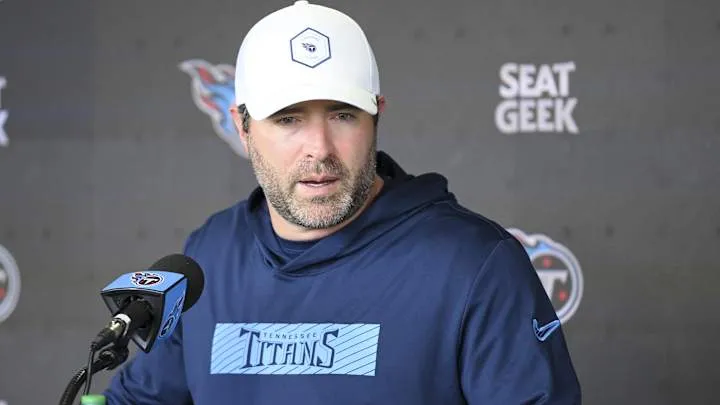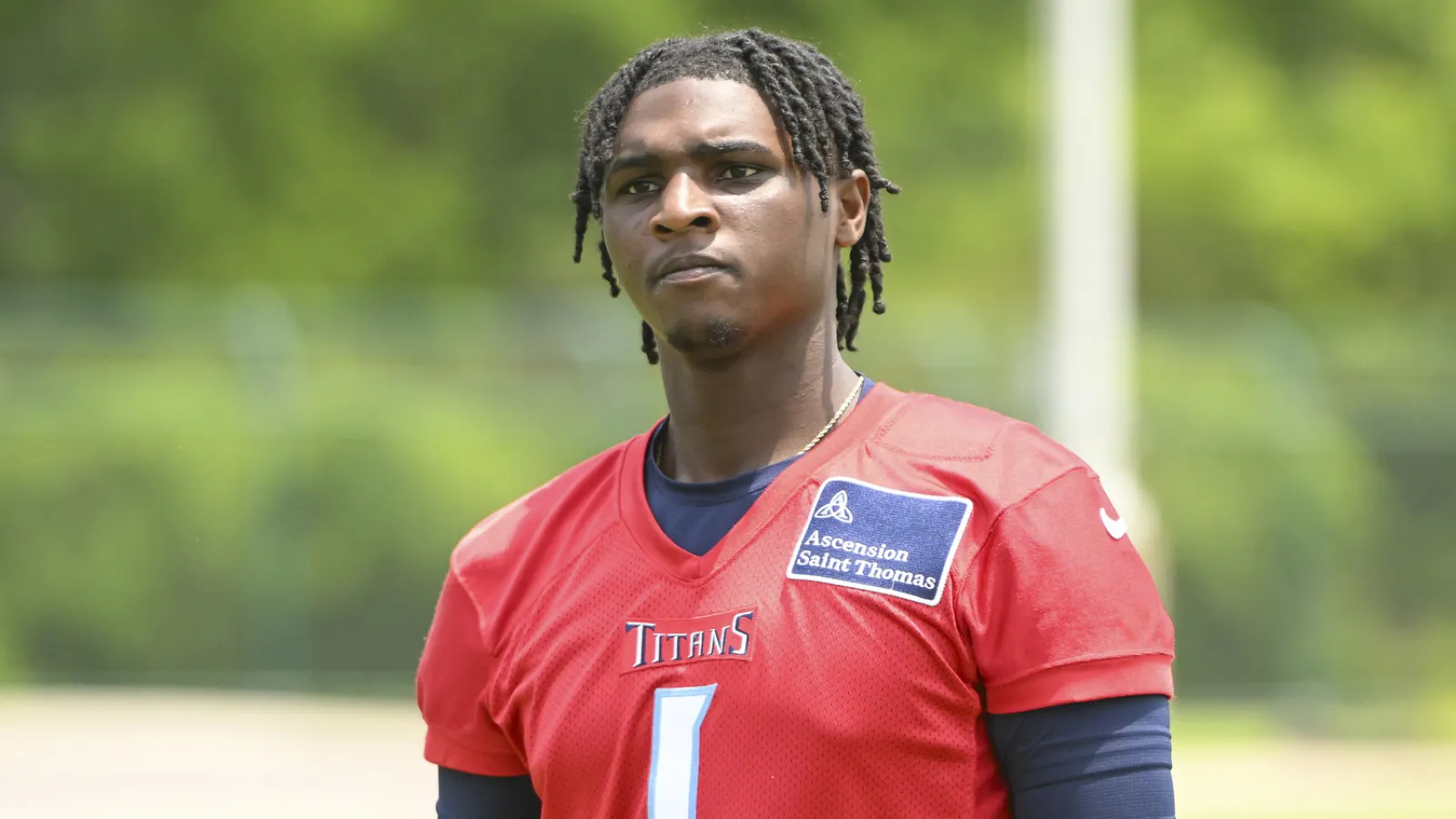

Brian Callahan’s Bold Plan: Can Rookie QB Cam Ward Become the Next Joe Burrow?
The Tennessee Titans are entering a new era under head coach Brian Callahan, and at the center of his ambitious vision stands rookie quarterback Cam Ward. With comparisons to Joe Burrow swirling around the young signal-caller, Callahan faces the monumental task of developing Ward into the franchise quarterback the Titans desperately need. The question isn’t just whether Ward has the talent—it’s whether Callahan’s offensive system and developmental approach can unlock the same magic that transformed Burrow from college standout to NFL superstar.

The Foundation of Callahan’s Quarterback Philosophy
Brian Callahan’s approach to quarterback development stems from his extensive experience as an offensive coordinator, most notably with the Cincinnati Bengals where he witnessed Joe Burrow’s meteoric rise firsthand. Callahan understands that developing a rookie quarterback requires more than just throwing him into the fire; it demands a carefully orchestrated plan that builds confidence while gradually increasing complexity.
The cornerstone of Callahan’s philosophy centers on progressive reads and pocket presence. Rather than overwhelming Ward with an entire playbook from day one, the Titans’ coaching staff has implemented a systematic approach that mirrors the early stages of Burrow’s development. This means starting with simplified concepts, high-percentage throws, and gradually introducing more complex route combinations as Ward demonstrates mastery of each level.
What makes Callahan’s approach particularly intriguing is his emphasis on pre-snap recognition. He believes that elite quarterbacks are made in the film room long before they step onto the field. Ward has been spending countless hours studying defensive tendencies, understanding leverage, and learning to identify coverage rotations. This mental preparation phase is crucial because it allows the physical tools to shine through once the cognitive load decreases.
The offensive line protection schemes also play a vital role in Callahan’s development strategy. Understanding that a rookie quarterback needs time to process information, the Titans have invested heavily in creating clean pockets and establishing a running game that keeps defenses honest. This balanced approach prevents opposing teams from simply pinning their ears back and rushing the passer, giving Ward the breathing room necessary to develop his timing and rhythm.
Cam Ward’s Unique Skill Set and NFL Readiness
Cam Ward enters the NFL with a skill set that naturally lends itself to comparisons with Joe Burrow. Both quarterbacks possess exceptional arm talent, the ability to make throws from various arm angles, and most importantly, the mental processing speed that separates good quarterbacks from great ones. Ward’s college tape reveals a quarterback who thrives in pressure situations, consistently making clutch throws when his team needed them most.
The mobility factor cannot be overlooked when discussing Ward’s potential. While he’s not a run-first quarterback, his ability to extend plays and create throwing lanes outside the pocket adds a dynamic element to the Titans’ offense. This mobility, combined with his strong arm, allows Callahan to implement bootleg actions and rollout concepts that can simplify reads while maintaining explosive play potential.
Ward’s football IQ has impressed coaches throughout the pre-draft process and into his rookie season. He demonstrates an understanding of defensive concepts that typically takes quarterbacks years to develop. This mental acuity allows him to audible at the line of scrimmage and make protection adjustments that keep the offensive line in favorable positions. Such intelligence suggests that Ward can handle the increased responsibility that comes with being an NFL starting quarterback.
The accuracy component of Ward’s game particularly excites the Titans’ coaching staff. His completion percentage on intermediate routes and his ability to thread the needle in tight coverage windows demonstrate the precision necessary to succeed at the professional level. These traits, combined with his natural leadership qualities, create a foundation upon which Callahan can build a championship-caliber offense.
The Joe Burrow Blueprint: Lessons from Cincinnati
Joe Burrow’s transformation from first overall pick to Super Bowl quarterback didn’t happen overnight, and Callahan was intimately involved in that process. The blueprint begins with establishing quick-game concepts that allow the quarterback to get the ball out rapidly while building confidence. These short, high-percentage throws serve multiple purposes: they protect the quarterback from unnecessary hits, establish rhythm early in games, and create favorable down-and-distance situations.
The progression to intermediate passing concepts represents the next phase of development. Burrow’s success with dig routes, comeback patterns, and crossing routes became a hallmark of the Bengals’ offense under Callahan’s guidance. These routes require precise timing, accurate ball placement, and trust between quarterback and receiver—all elements that Ward must master to reach his ceiling.
Red zone efficiency played a crucial role in Burrow’s early success, and Callahan plans to emphasize this area heavily with Ward. The condensed field in scoring position requires different decision-making processes and throw angles. Burrow’s ability to excel in these situations helped establish him as a clutch performer, a reputation that Ward must build if he hopes to reach similar heights.
The development of chemistry with receivers cannot be understated in this process. Burrow’s connection with Ja’Marr Chase and Tee Higgins didn’t happen by accident; it was the result of countless repetitions and a deep understanding of each other’s tendencies. Ward must develop similar relationships with his receiving corps, understanding their route-running nuances and preferred ball placement on various concepts.
Challenges and Potential Roadblocks
Despite the optimism surrounding Ward’s potential, several challenges could derail his development. The pressure of immediate expectations represents perhaps the greatest obstacle. Unlike Burrow, who entered a situation with established offensive weapons, Ward must help elevate the talent around him while still developing his own game. This dual responsibility can overwhelm young quarterbacks if not managed properly.
Injury concerns always loom large when discussing rookie quarterback development. Ward’s willingness to extend plays and his occasional tendency to hold the ball too long could expose him to unnecessary hits. Callahan must strike a balance between allowing Ward to use his mobility while teaching him when to throw the ball away or take a sack to protect his long-term health.
The learning curve associated with NFL defensive complexity presents another significant challenge. College defenses rarely show the disguised coverages and exotic blitz packages that Ward will face weekly in the NFL. His ability to process this information quickly and make correct decisions will largely determine his success rate during his rookie season and beyond.
Supporting cast development also factors into Ward’s potential success. While Callahan can scheme around talent deficiencies to some extent, Ward ultimately needs reliable targets and consistent protection to reach his ceiling. The Titans’ commitment to surrounding their young quarterback with talent will play a crucial role in determining whether the Joe Burrow comparisons prove prophetic or premature.

The Path Forward: Realistic Expectations and Long-term Vision
Brian Callahan’s long-term vision for Cam Ward extends beyond immediate success. The goal is to create a sustainable offensive system that can compete at the highest level for years to come. This requires patience in the development process while maintaining the competitive edge necessary to win games in the present.
The year-one expectations must remain realistic while still pushing Ward to reach his potential. Callahan has repeatedly emphasized that mistakes are part of the learning process, but the types of mistakes matter. Mental errors and poor decision-making are less acceptable than physical mistakes caused by inexperience with NFL timing and speed.
Leadership development represents an often-overlooked aspect of quarterback growth that Callahan takes seriously. Ward must earn the respect of veteran players while demonstrating the confidence and poise necessary to lead comeback drives and make crucial third-down conversions. This intangible quality separated Burrow from his peers and will be essential for Ward’s long-term success.
The ultimate measure of Callahan’s plan won’t be statistical achievements in Ward’s rookie season, but rather the trajectory of improvement and the foundation built for future success. If Ward can show consistent growth, minimize costly turnovers, and demonstrate the ability to perform in crucial moments, the Joe Burrow comparisons may prove more than wishful thinking—they may represent a realistic projection of what’s to come in Tennessee.


















